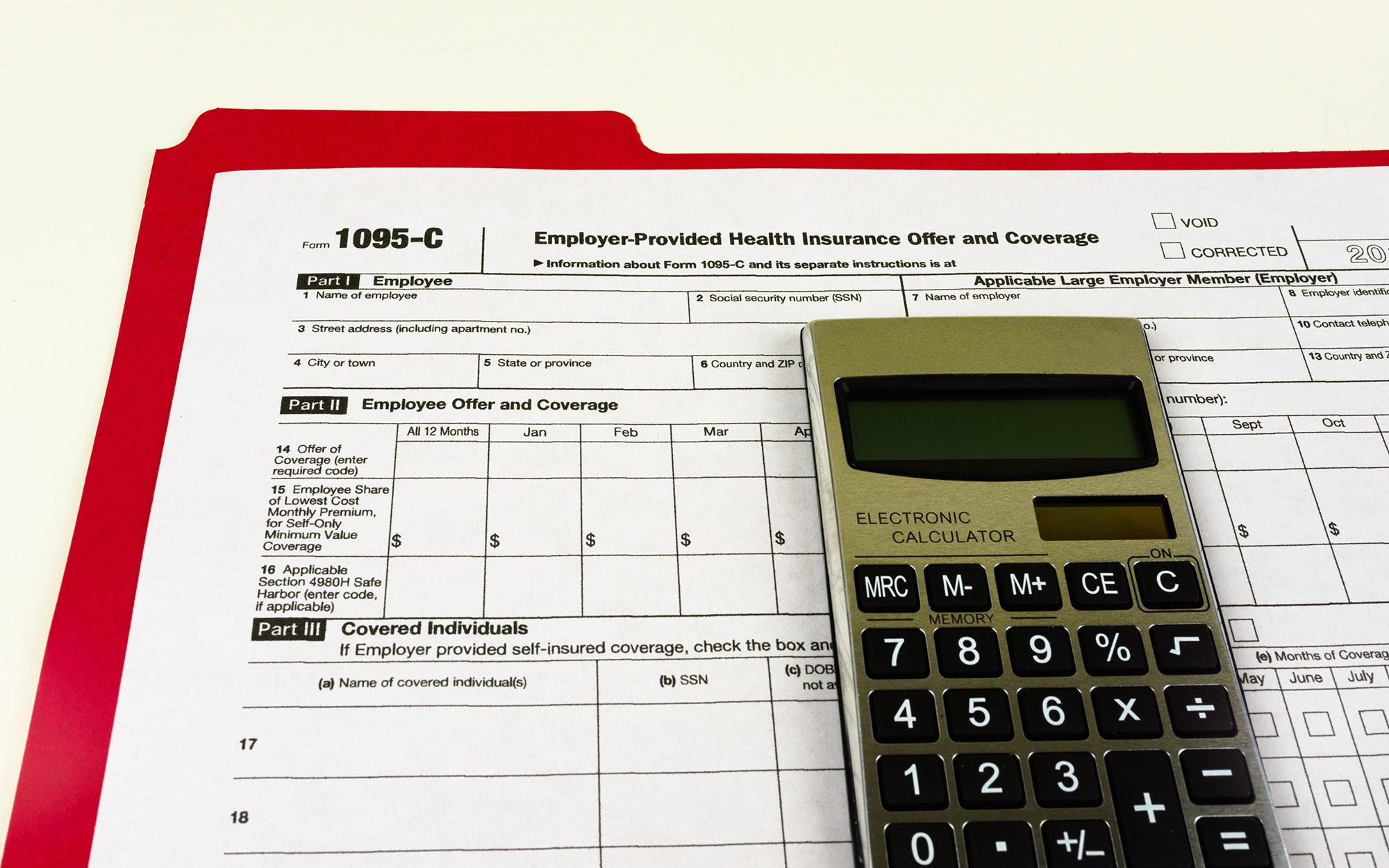Benefits Corner
Benefits Corner this month covers W-2 reporting, the new IRS Form 1095-C for health insurance requirements, as well as, knowing the symptoms for thyroid disease in women.
W-2 Reporting
The Affordable Care Act (ACA) provides that employers must report the aggregate cost of employer-sponsored coverage on each employee’s annual W-2 that employers generally are required to furnish to employees in January and then file with the Social Security Administration. Employers may voluntarily opt to report earlier. The amount reported is not taxable.
The aggregate cost generally includes both the portion of the cost paid by the employer and the portion of the cost paid by the employee, regardless of whether the employee paid for any cost through pre-tax or after-tax contributions. The aggregate cost is not reduced by any amount of the cost of coverage included in the employee’s gross income.
The aggregate cost is determined by tier (e.g., for single-only coverage or for family coverage), as applicable to the employee.
For more information on W-2 reporting, please contact your local human resources manager.
New IRS Form 1095-C

The ACA requires nearly all Americans to have health insurance or face a tax penalty. As part of its administration of the individual mandate as well as the employer shared responsibility provisions of the ACA, the Internal Revenue Service (IRS) requires employers such as Saia to satisfy certain new reporting obligations — one of which is the issuance of Form 1095-C to certain employees. The deadline for issuance of the form generally corresponds with the deadline applicable to the W-2 form, which for the 2016 tax year is January 31, 2017. However, the IRS recently announced an automatic extension of the deadline for issuing Form 1095-C for the 2016 tax year to March 2, 2016.
Generally employees would use Form 1095-C to confirm their period of coverage under the Saia medical plan, if applicable, or if they obtained health coverage through the ACA marketplace, to determine whether they qualified for a premium tax credit. In order to minimize the impact of the extended deadline for issuance of Form 1095-C, the IRS has also provided that individuals who rely upon other information received from employers about their offers of coverage do not have to include it with their 2016 federal income tax returns or amend their tax returns once they receive the form (or any corrected Form 1095-C).
Note that the IRS relief applies only for 2016 federal income tax returns and employees should retain their Form 1095-C with their other tax records.
Consequently, with the possible exception of employees who have coverage through the marketplace and believe they may qualify for a premium tax credit, you most likely have sufficient information from other Saia resources so that you do not have to wait until you receive Form 1095-C to file your 2016 federal income tax return. Note that the IRS relief applies only for 2016 federal income tax returns and employees should retain their Form 1095-C with their other tax records.
In accordance with the IRS requirements, Saia will be mailing Forms 1095-C on or before the March 2, 2017 deadline to the following Saia employees:
- Employees who were enrolled in the Saia medical plan at any time during 2016; and
- Employees who were considered to be full-time for 2016 under the ACA.
If you do not receive Form 1095-C by March 2, but believe that you should have, please immediately contact Saia Employee Benefits at empben@saia.com.
Thyroid Disease in Women: Know the Symptoms

Thyroid disorders are much more common in women than in men, but they’re often missed or confused with other conditions.
The thyroid is a small, but powerful gland in your neck. It produces hormones that control your metabolism, or the way your body uses energy. It also influences your heart rate, body temperature, bones, digestion and reproductive system. When the thyroid hormones get out of balance, it can have a profound effect on your health.
The symptoms of thyroid disease are often overlooked or confused with other conditions. As a result, many women don’t get the treatment they need. This puts them at risk for serious problems such as high cholesterol, heart disease and infertility.
When the thyroid hormones get out of balance, it can have a profound effect on your health.
What are the most common thyroid disorders?
Underactive thyroid (hypothyroidism) can occur at any age, but it becomes more common as a woman ages, especially after age 50. It occurs when the thyroid doesn’t make enough thyroid hormones. It may not cause noticeable symptoms at first, but as thyroid hormone levels continue to drop the metabolism slows. A woman will start to feel weak and run down and may have other symptoms such as weight gain and constipation.
Overactive thyroid (hyperthyroidism) is most common in women between ages 20 and 40. It occurs when the thyroid makes too much thyroid hormone. A rising hormone level causes the body to speed up. This can cause a woman to feel jittery or irritable, lose weight without trying and have trouble sleeping.
Thyroid nodules sometimes grow on the thyroid gland. Nodules usually don’t cause symptoms, but a doctor may feel a nodule during a careful physical exam. As a nodule grows it may be felt as a lump in the front of the neck.
Most thyroid nodules are harmless. Fewer than one in 10 is cancerous, but any nodule should be checked. Even a benign nodule may sometimes need to be removed.
What are the symptoms of thyroid disorders?
Hypothyroidism (underactive thyroid) may cause:
- Fatigue
- Weight gain from fluid retention
- Weight gain from fluid retention
- Low tolerance of cold
- Dry skin and dry, brittle hair and nails
- Forgetfulness and trouble concentrating
- Irregular or heavy periods
- Constipation
- Miscarriages or infertility
Hyperthyroidism (overactive thyroid) may cause:
- Nervousness
- Sweating
- Low tolerance of heat
- Trembling hands
- Fast or irregular heartbeat
- Weight loss
- Insomnia
- More frequent bowel movements
- Light or absent menstrual periods
- Muscle weakness
- Goiter (an enlarged thyroid gland)
Thyroid nodules often cause no symptoms, but they may be felt as a lump in the front of the neck below the Adam’s apple. A cancerous nodule may grow quickly, feel hard and cause:
- Pain
- Swollen lymph nodes under the jaw
- Hoarseness
- Trouble swallowing
If you have any symptoms of a thyroid disorder, see your in-network doctor or visit www.myuhc.com. Thyroid disorders can be treated successfully, usually with medication or surgery.





